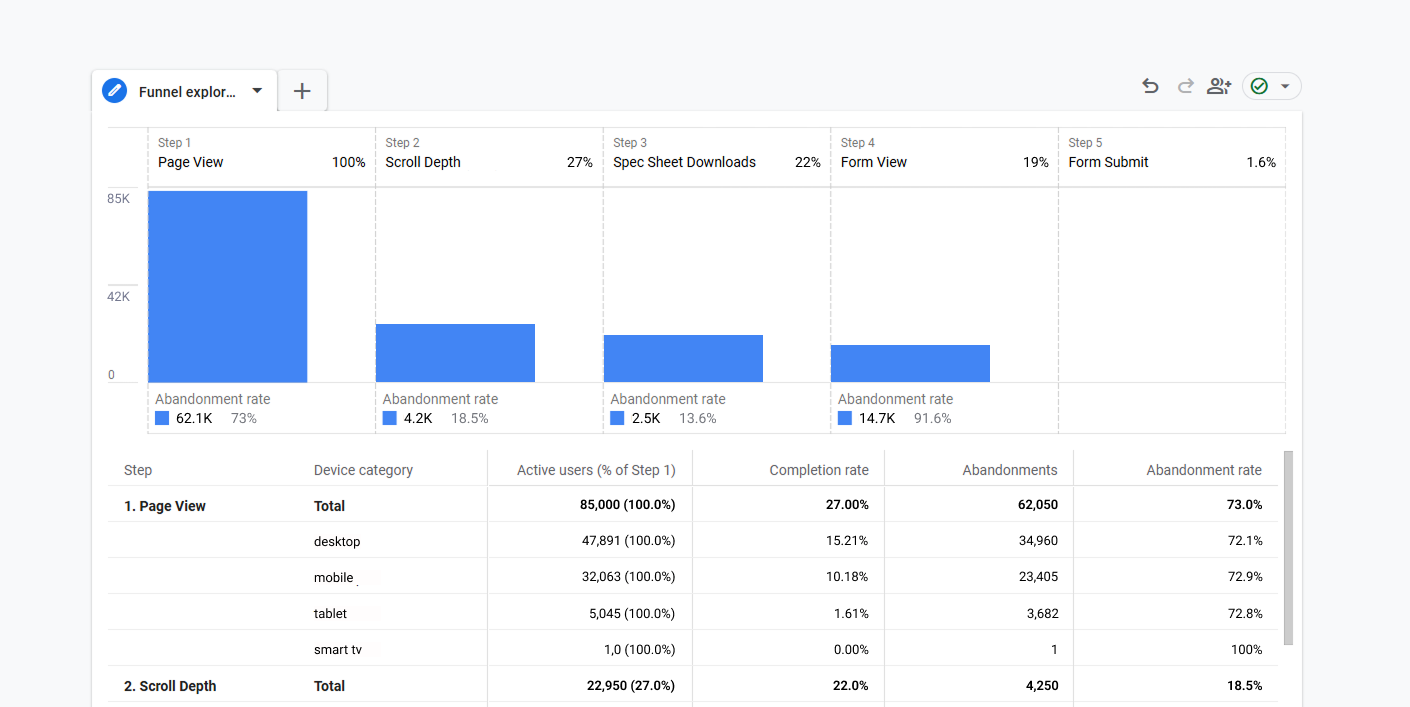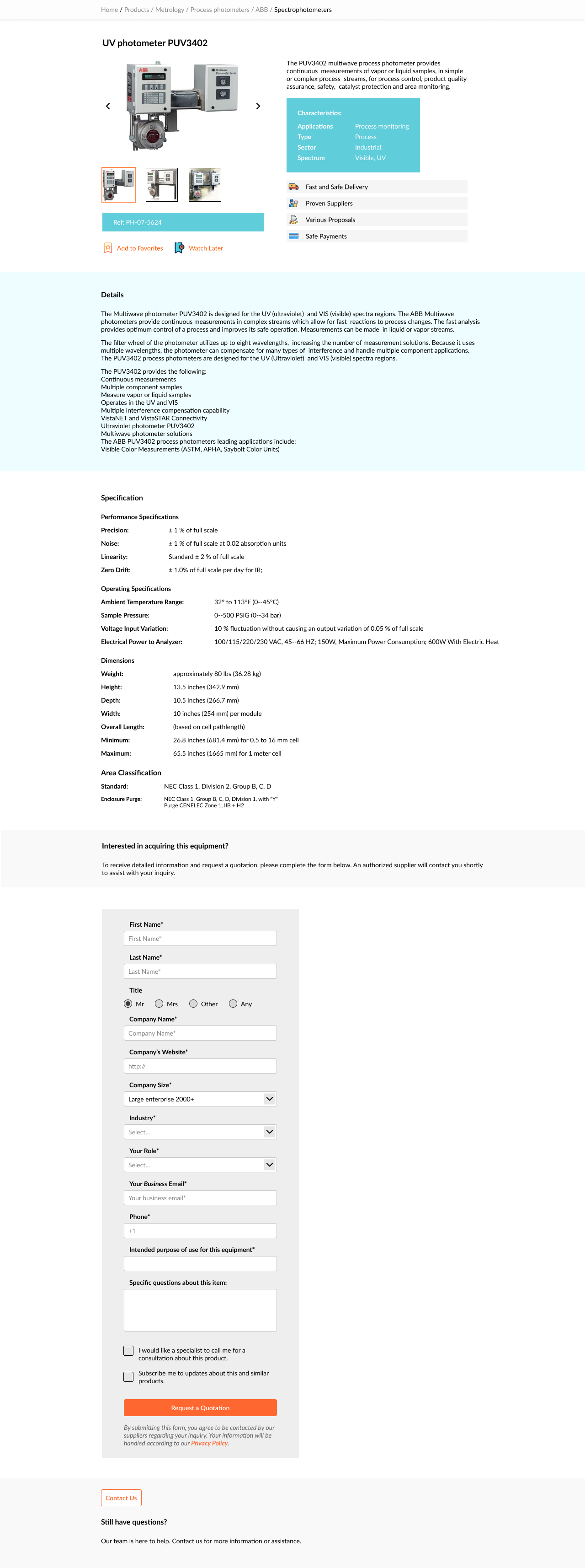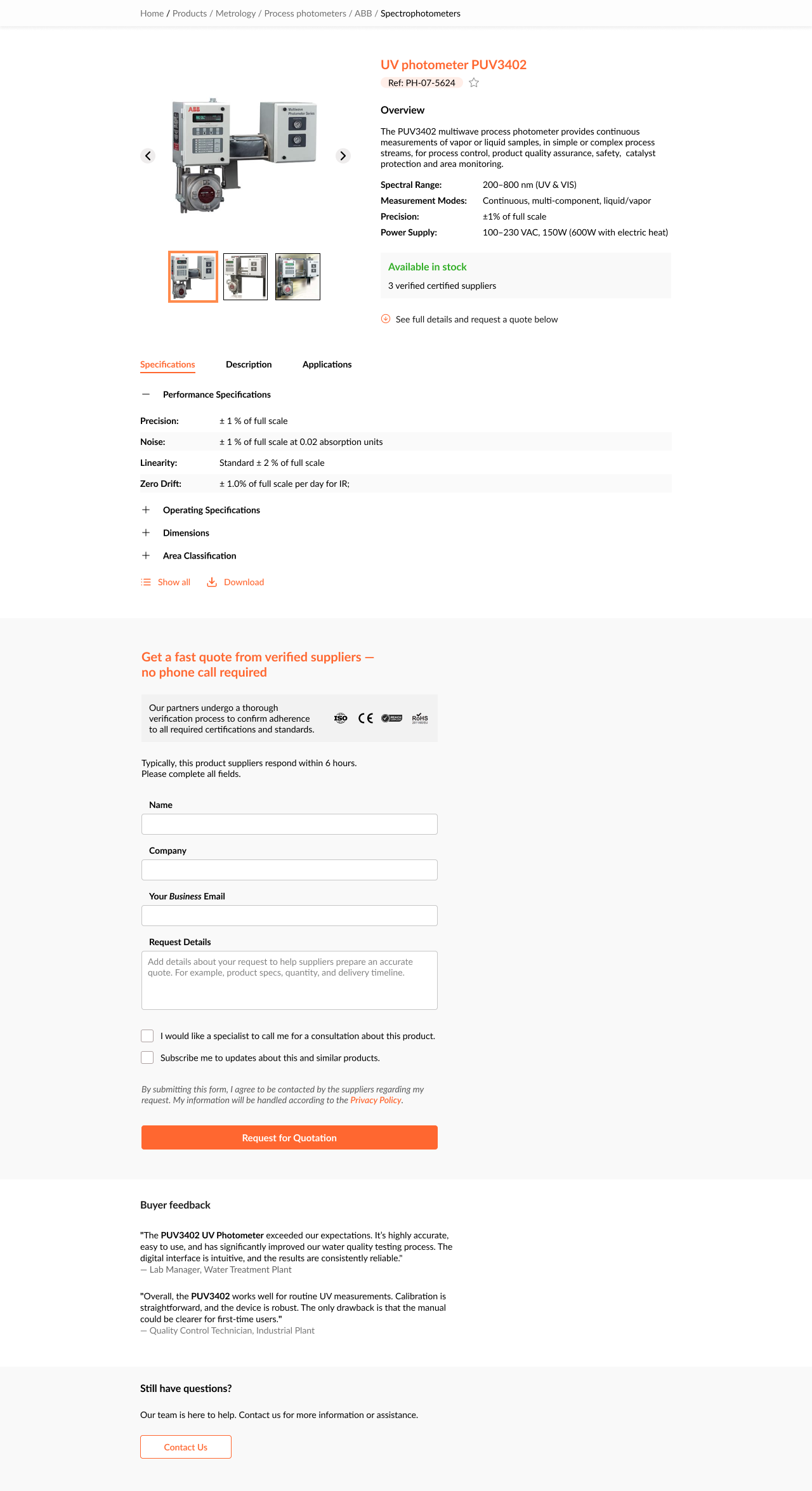Optimizing the Lead Conversion Funnel for a B2B Procurement Platform
-
Product Type
B2B -
Domain
Industrial procurement -
Timeline
4 weeks -
Team
Product Manager, Sales Ops Analyst, Marketer

Objective
Increase lead form submissions from high-intent visitors on product detail pages
Business context
The platform serves enterprise buyers (procurement managers, engineers, ops leads) sourcing from vetted industrial suppliers. Most purchasing decisions involve custom quotes, not transactions. While high-intent users visited the product detail pages (PDPs), quote requests were stagnating at 1.6%. This was a major funnel gap, especially since 80% of sales-qualified leads (SQLs) originate from PDP form submissions.
Challenge
The platform connects enterprise buyers with vetted suppliers for industrial procurement. Despite healthy traffic to product detail pages (avg. 85K/month), lead form submissions were underperforming. Conversion rate sat at 1.6%, well below the 3% benchmark for high-intent B2B pages. Leadership flagged this as a key revenue blocker, since 80% of SQLs originate from this step.
Analytics & Research
Google Analytics Custom Exploration Reports
Custom GA4 explorations revealed these insights:
-
User Journey Funnel (Custom Funnel Report):
- 100% – Landing on product page
- 27% - Scrolling depth (event: scroll_depth)
- 22% – Viewing spec sheet (event: spec_download)
- 19% – Scroll to form section (event: scroll_form)
- 1.6% – Submitting form (form_submit)

-
Form Drop-Off Analysis (Event Sequence Report):
- Avg. dwell time before abandonment: 4.3s
- Drop-off highest at “Company Size” and “Phone Number” fields
- 65% of drop-offs occurred after the "Company Size" field
-
Insights from Data Analyst (via Looker + Salesforce):
- Accounts with spec downloads were 4.1x more likely to convert to sales-qualified leads.
- Leads from product pages with visible supplier certifications had 2.5x higher close rates.
- SMB (small and mid-sized) buyers ( <200 employees) were overrepresented in form submissions, but less likely to close — creating low-efficiency lead volume
-
Interviews - spoke to three enterprise procurement professionals:
-
I want to see supplier credibility before I reach out.
-
I don’t want a call from a sales rep — I want pricing or spec clarification.
-
Long forms = I bounce.
-
Before


Design Strategy
1. Refining the Product Page
-
Ensuring clarity, completeness, and persuasive power:
- Improved product descriptions
- Checked grammar, tone, and consistency.
- Optimize product's technical data.
-
Visual enhancement:
- Improved visual hierarchy.
- Optimized layout.
- Ensured responsive design across devices.
2. Form Simplification and Improvement
- Reduced fields from 12 to 4: kept only Name, Email, Company, RFQ details.
- Added clarifying context above the form: “Get a fast quote from verified suppliers — no phone call required.”
- Trust signals: embedded supplier badges (ISO, REACH, ROhS)
- Showed buyer testimonials.
- Updated the Overview with more important, brief data about the product.
- Added “Average Response Time” badge based on actual CRM data (e.g., "Replies in under 6 hrs")
- Made the form more visually expressive, shifting the user's focus toward the request.
After


Experiment Setup
- A/B Test via Google Optimize (50/50 split)
- Targeted only high-traffic PDPs with >5K MUVs/month
- Success metrics: Primary: form_submit event Secondary: spec_download, scroll_depth, mobile conversion rate
- Enterprise buyers need assurance (credibility, response expectations) before engaging.
- Reducing form friction only works if you communicate the value of submitting.
- In procurement UX, quote shoud be quote — language precision matters.
- Industrial buyers want fast answers
- Market-speak repels industrial buyers. Avoid vague marketing fluff like “best-in-class” or “innovative.”
- Analytics-driven iteration is essential
